Animal Pak was founded in 1983 by Universal Nutrition and has grown to be one of the most iconic sports nutrition brands in the world. Originally, Animal Pak was simply a vitamin and mineral supplement pack that helped users hit their micronutrient intake. Today, Animal Pak is a supplement brand that offers numerous health and performance boosters. Not to mention, Animal Pak works with and is endorsed by a large number of elite athletes — from bodybuilders to strongman competitors.
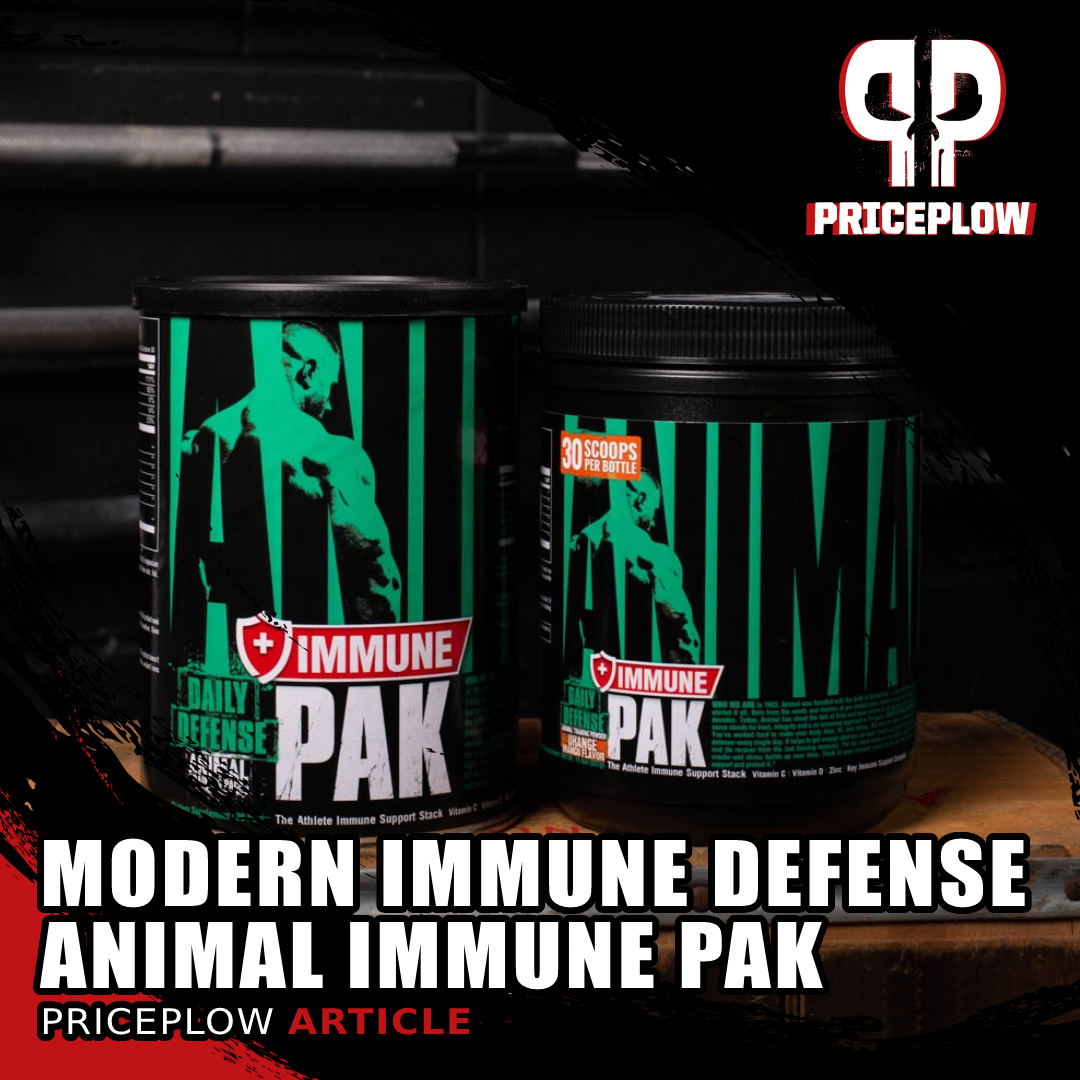
Universal Animal Immune Pak comes in both paks (pills) and powder, and has many of the ingredients we preach for modern immune concerns!
We recently covered pre workout supplement strategies such as Universal Animal Pump Pro and why you should consider stacking arginine with citrulline. Now, we're shifting our focus away from performance and back towards health and immunity with the Animal Immune Pak.
The team at Animal understands that health is not only essential for overall quality of life, but it's also a must for elite performance. Animal Immune, which comes in both "paks" and powder, picks up where Animal Pak leaves off. With vitamins and minerals already covered, what more can we add to bolster natural immunity? It turns out, there's quite a bit you can do in the modern environment.
Animal Immune Pak Powder: A Complete Immune Support Complex
When you're pushing your body to the limit, regardless of what sport you compete in, your risk of getting sick increases. That's because the body spends a greater amount of resources on performing rather than fighting off foreign invaders like bacteria, pathogens, and viruses.
“Immune health has always been important to us. Since the early days, we’ve had various immune-boosting components in our products in both the Animal and Universal SKUs; Animal: Animal Pak, Animal Flex, Animal Omega, Animal Cuts, Animal PM, Universal: Natural Sterol Complex, Uni-Vite, Greens, Vitamin C, etc. Due to the current environment, we realized how important it was to give the Animal product family its very own comprehensive immune health SKU. Enter Animal Immune Pak. The most complete and comprehensive immune support product in our market.”
– Animal Pak
Although supplements can't prevent or cure illnesses or diseases, they can boost your internal defense response and, as a result, lower the risk of developing an illness. This is exactly why Animal created Immune Pak, a comprehensive immune-support supplement that contains a high dose of zinc, vitamin C, vitamin D, antioxidants, and other natural herbs.
On the spot for our modern immune concerns
It's the herbs that we really focus on, because it's nearly the exact blend that we've discussed in previous podcast episodes when targeting modern immune concerns - and we didn't even realize Animal had already done it!
The Immune Pak is available in both powder and capsule form, and you can pick the one that's convenient for your lifestyle. However, it's important to note that the formulas are slightly different, which we cover in-depth below!
Keep reading to learn more about the Immune Pak. But before you do, sign up for Animal Pak news and deal alerts below and receive notifications every time they launch a new flavor, product, or sale!
Universal Animal Immune – Deals and Price Drop Alerts
Get Price Alerts
No spam, no scams.
Disclosure: PricePlow relies on pricing from stores with which we have a business relationship. We work hard to keep pricing current, but you may find a better offer.
Posts are sponsored in part by the retailers and/or brands listed on this page.
This area is reserved for Team PricePlow's upcoming videos.
Subscribe to our channel and sign up for notifications so you catch it when it goes live!
Metabolic health is key to immunity
Before starting, we do want to first emphasize the importance of great metabolic health, which will have the immune system functioning as powerfully as possible.[1] This means keeping both weight and blood sugars under control while avoiding hyperinsulinemia and diets that cause it (which generally includes highly processed foods and oils).
Immune Pak Powder vs Immune Pak Capsules
Animal is well-known for their "Paks", but they've also begun releasing powders for those who don't want a ton of pills. There are some differences here, of course:
- Immune Pak Powder has 5 grams of glutamine to support gut health, whereas Immune Pak capsules have none.
- Immune Pak capsules contain calcium, phosphorus, alpha-lipoic acid, BioPerine (black pepper extract), and garlic bulb.
In general, we believe the addition of garlic bulb to the capsules gives it a more compelling argument in modern times, but the powder's glutamine may be more helpful for those who need additional recovery and gut health support.
Immune Pak Powder Ingredients
We're going to cover the Immune Pak Powder because a larger percentage of readers prefer powder over capsules. But a lot of information we'll discuss can translate to the capsules since they have most of the same ingredients, with the exception of glutamine. After that, we'll talk about garlic specifically.
Here's what one serving (10.9g) of Immune Pak Powder provides:
-
Vitamins & Minerals
-
Vitamin C (as ascorbic acid) - 1000mg (1111% DV)
Immune Pak contains a high dose of vitamin C, clocking in at 1000 milligrams, which is more than 1,000% of the recommended daily value. Vitamin C is a water-soluble vitamin, powerful antioxidant, and cofactor for various regulatory genes and enzymes.[2] It's also heavily involved in the immune system, thus insufficient vitamin C intake increases your chance of becoming sick.[2]
Animal Immune Pak Powder includes five grams of glutamine for gut health and immune system support! This is in place of garlic in the paks, which wouldn't taste so good in a powder!
Here are some of the key functions of vitamin C:
- Scavenges free radicals
- Strengthens the epithelial barrier (keeps pathogens from entering the body)
- Increases the activity of phagocytic cells, such as neutrophils, which help remove and destroy pathogens
- Needed for apoptosis (programmed cell death) and the removal of dead cells
- Boosts the proliferation and differentiation of T- and B-lymphocytes[2]
Moreover, infections and/or illnesses significantly affect your vitamin C levels due to an increase in metabolic requirements So supplementing with more than the recommended daily allowance can help ensure that you're consuming an adequate amount.[2]
Vitamin C always gets tons of attention as a free-radical-destroying antioxidant, and has efficacy in our modern environment
A systematic review from the journal Nutrients states that "Supplementation with vitamin C appears to be able to prevent and treat respiratory and systemic infections."[2] These are just some of the reasons why vitamin C is included in immune system support supplements.
Relevance to modern immunity concerns
With regards to modern viral concerns, Vitamin C is theoretically extremely encouraging and safe,[3] and we see no reason not to include it in any immunity stack. It's been successfully used to significantly reduce mortality from sepsis and reduce ICU stay by 8%, but note that much of the research is based upon intravenous use, so it won't directly apply to oral supplementation.[4]
-
Vitamin D (as cholecalciferol) - 125mcg (5000 IU) (625% DV)
With 125 micrograms of vitamin D (5000 IU), Animal provides well above the recommended daily value. Vitamin D is a fat-soluble vitamin, meaning that fat needs to be present in order for the vitamin to be fully absorbed. Therefore, it's best to take Immune Pak alongside a meal containing a moderate amount of fat.
Vitamin D can be obtained through diet and/or sunlight, however, in areas of the world where sunlight is sparse from late fall to early spring, it's easier to develop a deficiency. Furthermore, some people have difficulty converting sunlight into vitamin D, regardless of how much sun exposure they receive. So supplements can serve as a type of insurance policy to ensure you get enough of this essential vitamin.
It's well-established that vitamin D plays a crucial role in calcium absorption and bone health. But what can it do for the immune system? A systematic review published in the Journal of Investigative Medicine found that vitamin D deficiency has a significant impact on your overall immune system function.[5] It turns out that the vitamin D receptor is present in a variety of immune cells, including T-cells, B-cell, monocytes, and antigen-presenting cells. Therefore, it can modulate both innate and adaptive immune responses.[5,6] Vitamin D can also promote a better tolerogenic environment, meaning that it induces protective immunity.[5,6]
Relevance to modern immunity concerns
At this point, it is incredibly well accepted that lower vitamin D levels put humans at significantly greater risk of severe consequences from numerous types of diseases caused by modern viral environments, and this has been repeatedly demonstrated by multiple studies and meta-analyses.[7-10]
Long story short: never let your vitamin D levels drop. If you're not getting sun, supplement vitamin D3 and avoid activities and drugs that reduce vitamin D levels.
-
Zinc - 30mg (273% DV)
The only mineral in Immune Pak Powder is zinc, but 30 milligrams is quite a massive dose! Other than vitamin C, zinc is one of the most common ingredients found in immune-support supplements because it affects different aspects of the immune system.
A systematic review published by Molecular Medicine states, "Zinc is crucial for normal development and function of cells mediating innate immunity, neutrophils, and natural killer (NK) cells."[11] Moreover, zinc deficiency negatively affects phagocytosis, macrophages, cytokine production, intracellular killing, and the growth/function of T- and B-cells.[11]
Similar to vitamin C, zinc serves as a potent antioxidant, but it also acts as a stabilizing agent for cellular membranes, which makes them more resilient to oxidative stress caused by inflammation.[11] Zinc is found in several foods, most notably shellfish, beans, legumes, nuts, and some whole grains. But with the Immune Pak, your recommended daily value of nutrients is covered!
Relevance to modern immunity concerns
Similarly to Vitamin D, there is no argument against zinc's efficacy in modern times, both in terms of avoiding deficiency and additive supplementation (with or without accompanying drugs).[12-17]
If you're not sure about your zinc status, get your blood drawn - it's not expensive. Many researchers are suggesting to keep "serum 25(OH)D levels to above 50 ng/mL to prevent or mitigate new outbreaks due to escape mutations or decreasing antibody activity."[7]
-
-
Immune Support Complex - 7850mg
-
L-Glutamine - 5000mg
The Immune Pak Powder kicks off the immune-support complex with five grams of L-glutamine — the most abundant amino acid in the human body. In addition to protein powder, L-glutamine is found in foods like red meat, seafood, dairy, eggs, chicken, and turkey. Most people get plenty of glutamine from diet alone and don't necessarily benefit from supplementation. However, glutamine is classified as a conditionally essential amino acid because under extreme circumstances (e.g.strenuous training, illness, injury), extra glutamine may:
- Facilitate recovery
- Boost the immune system
- Promote gut health[18]
Moreover, research shows that you can develop glutamine deficiency during periods of excessive metabolic stress (including injury, illness, and intense exercise).[18] It's also noted in the literature that glutamine helps preserve muscle mass, maintains appropriate nitrogen balance, and enhances barrier function within the gastrointestinal system, which is crucial for preventing pathogens from entering circulation.[18]
Glutamine is one of the primary fuel sources for both immune and intestinal cells,[19] thus it's essential for the proper functioning of lymphocytes, phagocytes, and cytokines.[20] Lastly, glutamine serves as a precursor to one of the most powerful antioxidants in the body — glutathione.[19] In general, it's a major energy substrate for immune cells,[21-23] so it's centrally important to immunity.
The reason why glutamine is in Animal Pak Powder is that capsules can accommodate a limited amount of ingredients. So if you're looking for a supplement with glutamine, Immune Pak Powder is the way to go!
Relevance to modern immunity concerns
Theoretically, glutamine usage makes sense because just five days of supplementation can significantly reduce serum levels of β-1 interleukin, tumor necrosis factor-α and hs-CRP while increasing appetite.[24] Glutamine deficiency is also part of a poor metabolic profile that runs greater risk of severe illness.[25] Usage of glutamine has shortened hospital time,[26] and has shown incredible synergistic action with Vitamin D and zinc,[27] two ingredients also in Animal Immune.
-
N-Acetyl-L-Cysteine - 600mg
N-acetyl-L-cysteine (NAC) is a supplemental form of the semi-essential amino acid cysteine. The compound is primarily supplemented for the purpose of increasing glutathione production. Along with 5 grams of glutamine, your glutathione levels should be through the roof.
Studies show that glutathione defends against oxidative stress, supports the immune system, decreases cellular damage, and may even promote longevity.[28,29] The majority of NAC's benefits are associated with its ability to boost glutathione levels, including promoting brain health, increasing dopamine levels, and slowing down cognitive decline that occurs with age.[30] If that's not good enough, NAC has also been found to enhance numerous immunological functions, such as T-cell proliferation, and natural killer cell production.[31,32]
Relevance to modern immunity concerns
NAC is a slam dunk in terms of its importance in the modern immunity stack.[33,34] We see no reason why you wouldn't want to bolster glutathione levels.
-
Olive Leaf Extract - 500mg
Olive leaf extract is an ingredient that we don't see in supplements very often, but a good amount of evidence suggests it's a potent immune-boosting agent. Olive leaf extract contains a higher amount of beneficial polyphenols that exert cardioprotective, antioxidant, and anti-inflammatory activities.[35]
Olive Leaf Extract brings a ton of benefits and is extremely popular for its weight loss and thyroid function benefits... but don't forget about immunity as well!
A comparative study conducted by researchers from the University of Bari Aldo Moro in Italy found that olive leaf extract increases the body's production of key immune cells, including CD8+ and natural killer cells.[35] Furthermore, the olive leaf extract induced nitric oxide production, which vasodilates your blood vessels, suggesting that it positively affects the cardiovascular system.[35]
A study published by the International Journal of Molecular Sciences found that olive leaf extract supplementation had significant effects on anti-inflammatory and cancer-related gene expression.[36] The olive leaf extract was found to alter the response of peripheral mononuclear cells (white blood cells associated with the immune system) in healthy males, leading to an upregulation of several beneficial immune system functions.[36]
Relevance to modern immunity concerns
Olive leaf extract, in our opinions, is the most underrated ingredient for the modern immunity stack. No fancy standardizations are needed (like we use for weight loss supplementation), the whole leaf is perfectly fine.
Mechanistically, olive leaf has been shown to block ACE-2 docking better than certain drugs,[37] can suppress IL-6 providing very strong antiviral activity,[38] impairs cytokines,[39] and can boost glutathione independently of NAC.[40]
Most readers have heard of the other immunity ingredients discussed today, but olive leaf deserves more attention.
-
Astragalus Root - 500mg
Rather than completely replace arginine with citrulline, should we consider pairing them together instead? Turns out, this is what Animal's done in both of their Animal Pump pre workouts!
Astragalus root, also known as Huang Qi, is an herb that's been used for thousands of years, in China and parts of Southeast Asia, to treat immune disorders.[41] According to a study published by the American Journal of Chinese Medicine, an increasing amount of evidence suggests astragalus has anti-inflammatory, immune-regulatory, and immune-boosting properties.[41]
While the mechanism of action for astragalus is unclear, it's been proposed that astragaloside (ASI), a major bioactive constituent of astragalus, can increase CD45 phosphatase activity.[41,42] CD45 phosphatase is an enzyme that upregulates the activity of immune cells, thus boosting the immune system response.[41,42]
Relevance to modern immunity concerns
A major component of astragalus, astragaloside, has been shown to have high binding affinity to ACE2.[43,44] Since astragalus can inhibit activation of the MAPK/NF-B signaling pathway and downregulate TNF-α, IL-6, IL-8, as well as other inflammatory proteins, it can reduce the inflammatory response and has a very important role in our stack.
-
Ashwagandha Extract (whole plant) - 500mg
Withania somnifera, commonly known as ashwagandha root extract, is a powerful adaptogen that can help users overcome physical and mental stressors.[45-51] But how does that relate to the immune system? Well, the more stressed you are, the fewer resources you have to fight off pathogens. Hence, your susceptibility to becoming ill is much higher.
A preliminary study published by the Journal of Alternative and Complementary Medicine found that ashwagandha significantly increases the activity of lymphocytes.[46] That said, more research is needed to further understand the compound's effect on the immune system.
Stack with Animal Greens and learn more about Spirulina, Wheat Grass, and Chlorella!
In addition to helping you adapt to stress, a large body of evidence has shown that ashwagandha possesses the following beneficial properties:
- Antioxidant
- Anticancer
- Anti-inflammatory
- Antibacterial
- Neuroprotective
- Antifungal
- Immunomodulatory
- Anxiolytic
- Anti-depressant
- Cardioprotective
- Cognitive enhancing[45-51]
Ashwagandha's wide array of health benefits are mainly attributed to its withanolide content.[45] Withanolides are bioactive compounds that are capable of carrying out numerous functions, including reducing cortisol levels (the body's primary stress hormone).[45] Not only can ashwagandha reduce your risk of getting sick, but it may also boost your mood, recovery, and performance.[45-51]
Relevance to modern immunity concerns
Ashwagandha has been shown to be a safer and more effective alternative to popular antiviral drugs.[52] This makes sense, given that several withanolides within ashwagandha have been shown to both inhibit ACE2 expression[53] and exert high docking energy.[54]
-
Quercetin - 300mg
Before heading into wild, novel ingredients for weight loss, make sure you have the basics covered! It turns out, Animal's already done nearly all of that for us in Animal Cuts Powder, and metabolic health is pivotal for immunity.
Quercetin is both a flavonoid and polyphenol that's present in various types of foods and beverages, including berries, red wine, apples, onions, and tea leaves. Research shows that quercetin expresses anti-inflammatory, antiviral, anti-allergenic, and anti-carcinogenic characteristics.[55,56] There's also evidence to suggest that quercetin may decrease platelet aggregation, capillary permeability, and lipid peroxidation.[55,56]
A systematic review by the journal Nutrients reports that quercetin performs primarily by altering gene expression.[55] Although quercetin's immune-boosting effects are supported by various studies, the plant flavonol is most well-known for its anti-allergenic properties.[56]
A study published by the journal Molecules reports that quercetin prevents the release of histamines, reduces pro-inflammatory cytokines, decreases leukotriene synthesis, and down-regulates interleukin IL-4 production.[56] Therefore, quercetin may be an effective treatment for numerous respiratory conditions, including upper respiratory tract infections, allergic rhinitis, asthma, and allergic reactions.[56]
Relevance to modern immunity concerns
Most users who have dug into recent immunity have read that quercetin is a zinc ionophore that pairs incredibly well with the zinc discussed above, and that is absolutely the case.[57] Several studies have shown it to have great success with faster viral clearance and lower symptom severity, especially when paired with zinc, vitamin C, and vitamin D as we have here.[58-61]
-
Ginger Root - 250mg
Ginger root is a cooking spice that boasts several health benefits. The rhizome (stem) of the ginger root has been used in traditional herbal medicine for thousands of years. Its pharmacological properties are attributed to its diverse phytochemistry.[62]
We've long known about ginger's anti-nausea, anti-inflammatory benefits, don't forget that it can bolster immunity as well!
Ginger's primary bioactive constituents include gingerols, shogoals, zingerone, and paradols.[62] These bioactive compounds give ginger its potent antioxidant, anti-cancer, anti-diabetic, and anti-inflammatory properties.[62] Thus, ginger may be beneficial for a variety of medical ailments, such as cardiovascular disorders, degenerative disorders, diabetes, cancer, and gastrointestinal disorders.[62]
Relevance to modern immunity concerns
Because of the above effects, ginger has been postulated to be incredibly useful to modern concerns.[63] There's less research with ginger, but it has been shown to be significantly active and orally bioavailable in binding and fighting viral infections.[64-66] The most potent components in this regard have been shown to be gingerenone A, gingerol, geraniol, shogaol, zingiberene, zingiberenol, and zingerone.[64,66]
-
Grape Seed Extract - 200mg
Vitis vinifera, commonly known as grape seed extract, is primarily used in pre-workouts and pump products because of its ability to boost blood flow, and deliver nutrients and oxygen to blood vessels.[67] But GSE is also rich in proanthocyanidins, flavonoids, and phenolic acids, which are powerful antioxidants.[67]
Research demonstrates that GSE has the following properties:
- Antidiabetic
- Antimicrobial
- Antitumor
- Anti-Inflammatory
- Immunomodulatory
- Cardioprotective
- Antioxidative
- Neuroprotective[67]
Overall, GSE offers a variety of health benefits that go beyond boosting the immune system.
-
What about the garlic in the Animal Immune Paks?
If you don't care about "paks" vs powder, and just want the strongest benefits, the choice comes down to glutamine (in powder) vs. garlic in paks. There are some other differences, such as the alpha lipoic acid and black pepper extract, but garlic is the primary debate.
It's well-known that garlic has great heart health benefits,[68-70] and that's recently become a bit more relevant to some. But more recently, we've seen garlic outperform certain antiviral drugs in terms of reducing parasites![71] It inhibits some types of coronaviruses that have been shown to cause bronchitis,[72] making it quite useful for immunity.
Mechanistically, garlic can inhibit ACE-2 docking, something we've discussed numerous times with the above ingredients.
In general, there are two strategies if you want to go all in:
- Take Animal Immune Paks and drink an amino acid beverage with glutamine inside (you can add Universal Nutrition Glutamine to anything, or consider Universal Nutrition's BCAA Stack, which has it)
- Take Animal Immune Powder and eat a clove of garlic separately or in your food.
We value garlic tremendously in the modern immune environment, and even enjoy smelling it to open and reactivate sinuses, so give it serious consideration.
Animal Pak Keeps you Running Strong
Whether you're looking for a comprehensive immune system support supplement, a high-quality protein powder to help you recover, or a powerful pre-workout to boost your performance in the gym, Animal Pak has it all! Animal Pak has been in the supplement industry for over 30 years, and they're one of the few companies that manufacture their own products in-house. This means they're able to oversee every step of the process to ensure that you're getting a supplement that lives up to their high standards.
If you try out any of Animal Pak's products, it's easy to tell that they prioritize quality control, which is something that we really appreciate. That means you can rest assured that what's on the label is in the bottle. This is just one of the reasons why Animal Pak has risen to the top and stayed there for so many years.
Over the past few months, we've seen an influx of immune-supporting supplements and have found a majority of them are nothing more than a watered-down multivitamin. With Immune Pak, Animal Pak goes above and beyond the competition by including high doses of key vitamins and minerals, along with several ingredients shown to have potent health benefits. So, if you need an immune-support supplement to keep you running strong, consider trying Animal Immune Pak.
Universal Animal Immune – Deals and Price Drop Alerts
Get Price Alerts
No spam, no scams.
Disclosure: PricePlow relies on pricing from stores with which we have a business relationship. We work hard to keep pricing current, but you may find a better offer.
Posts are sponsored in part by the retailers and/or brands listed on this page.
Note: This article was originally published on October 14, 2020, but has been updated on November 4, 2021 with more up-to-date and relevant research.
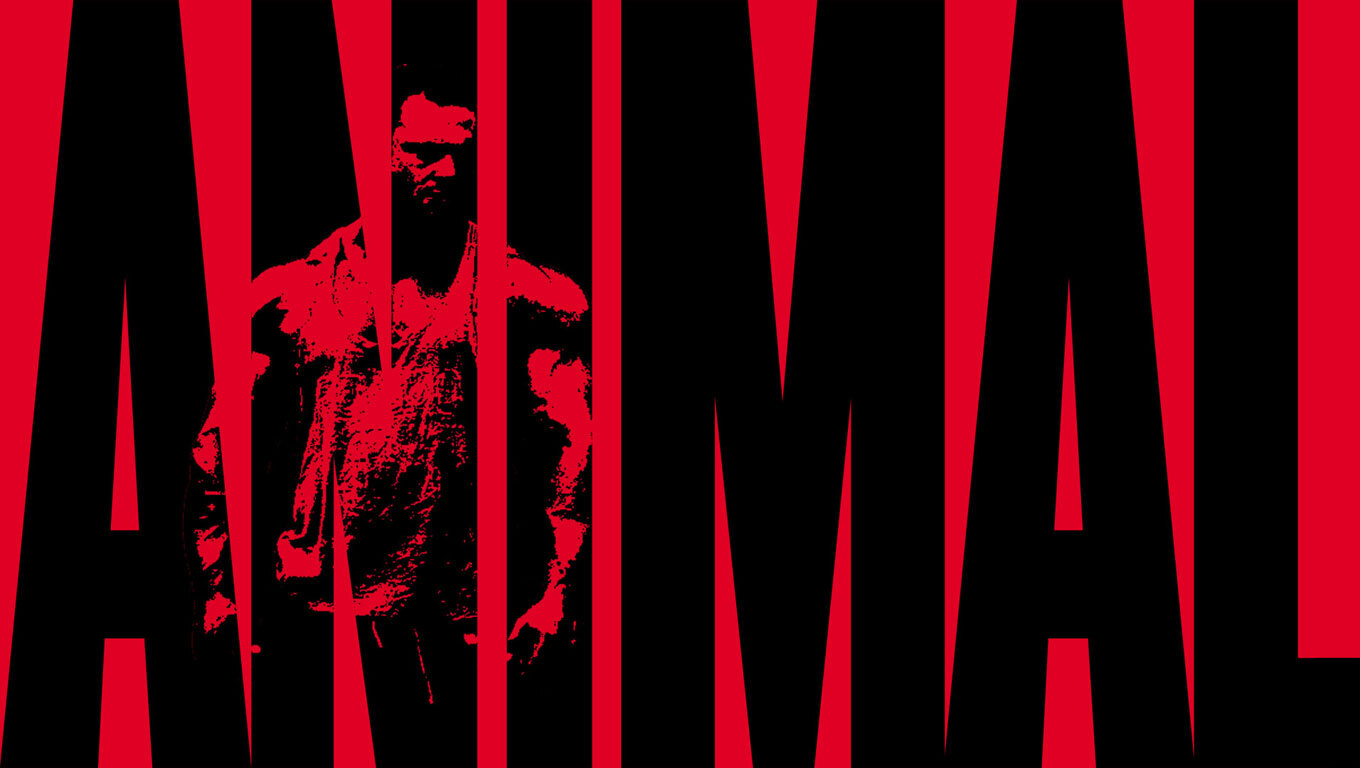
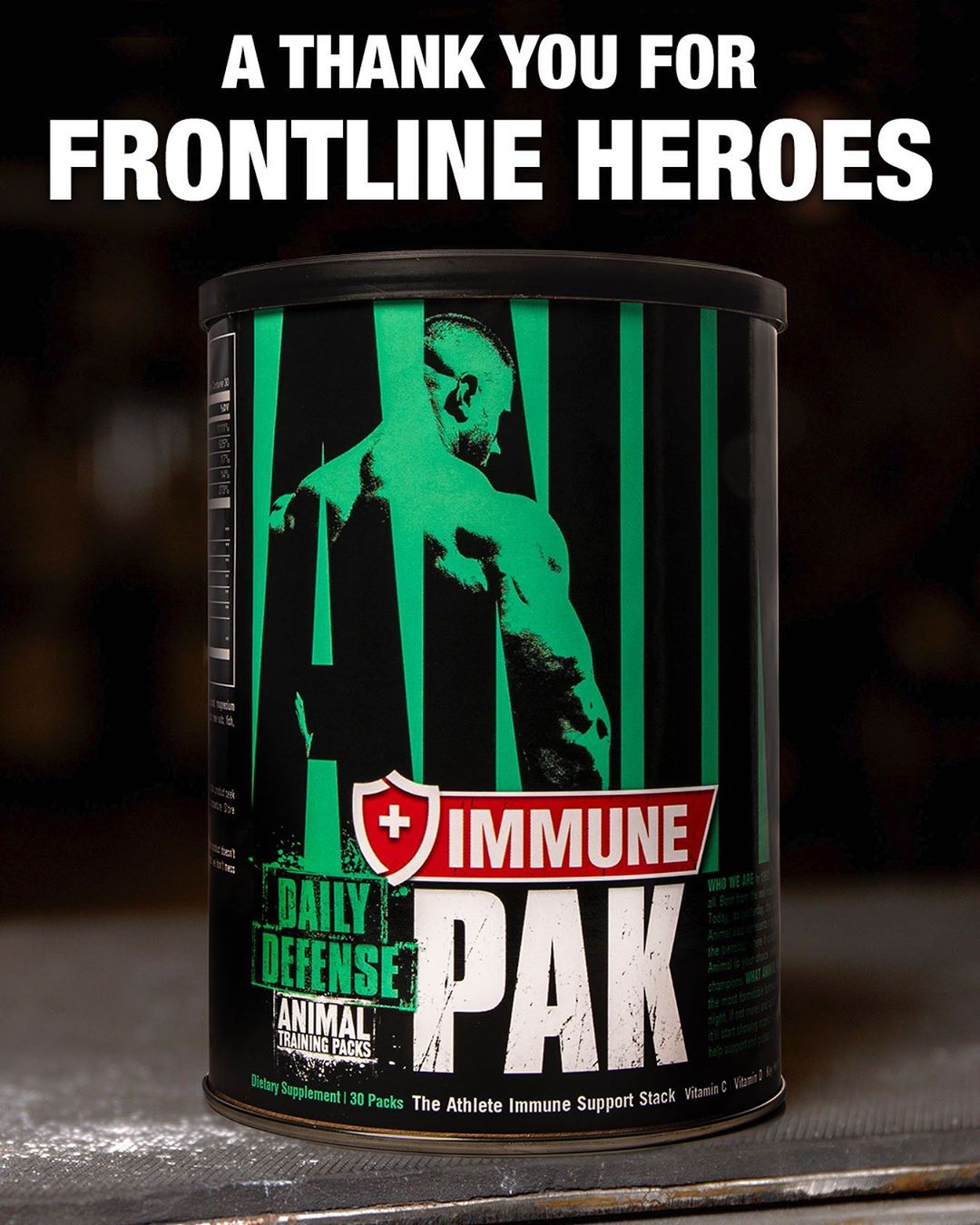

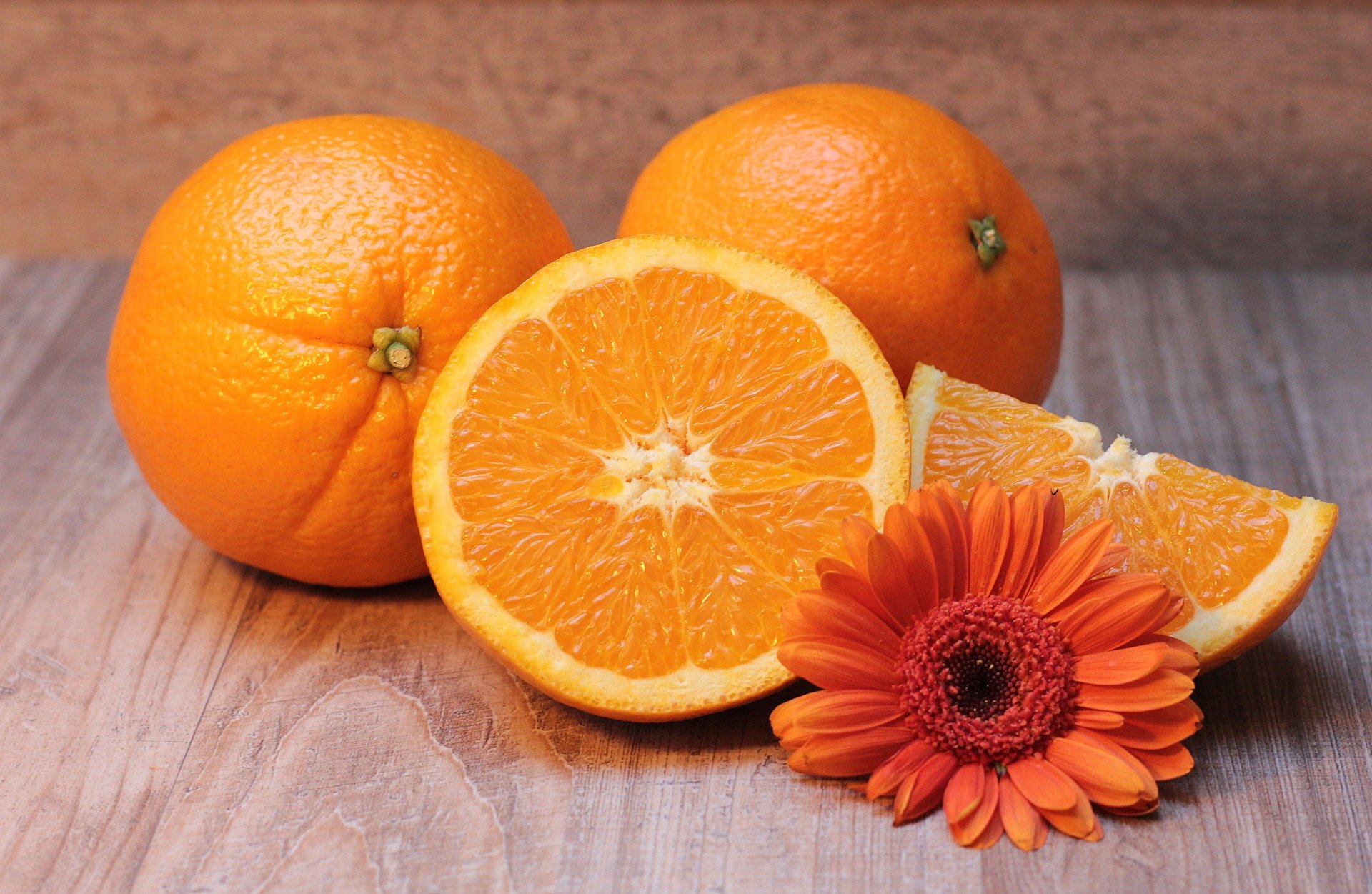
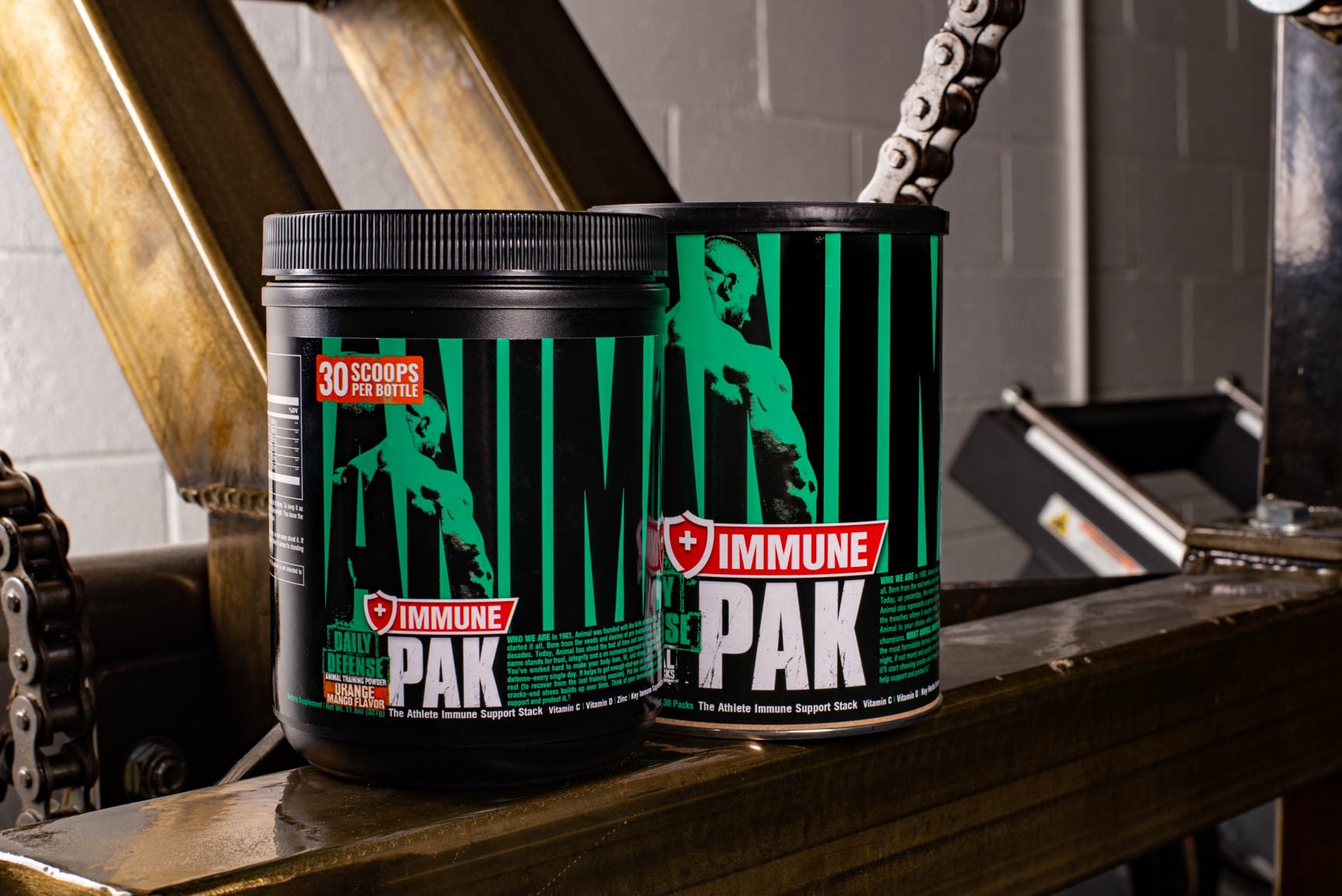
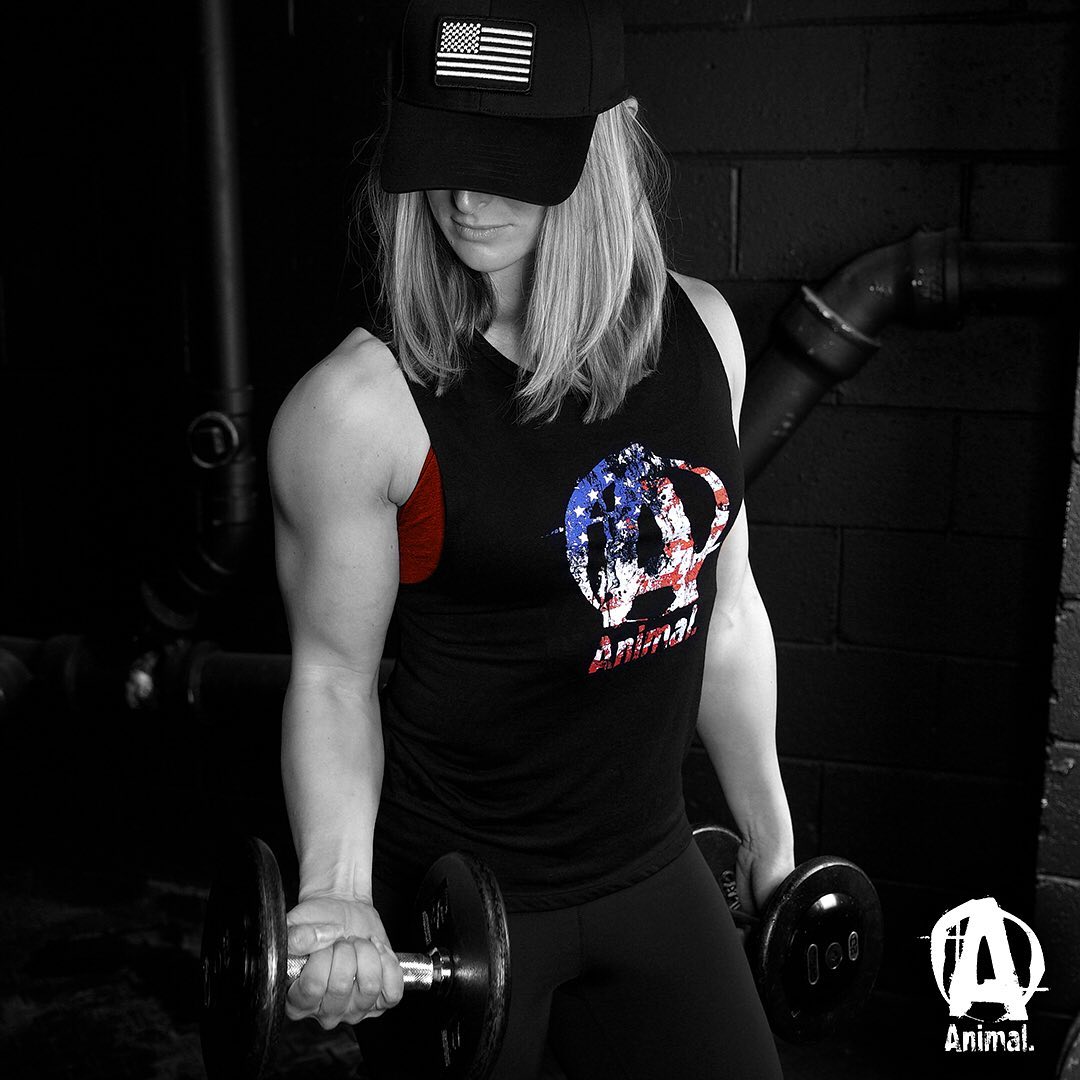


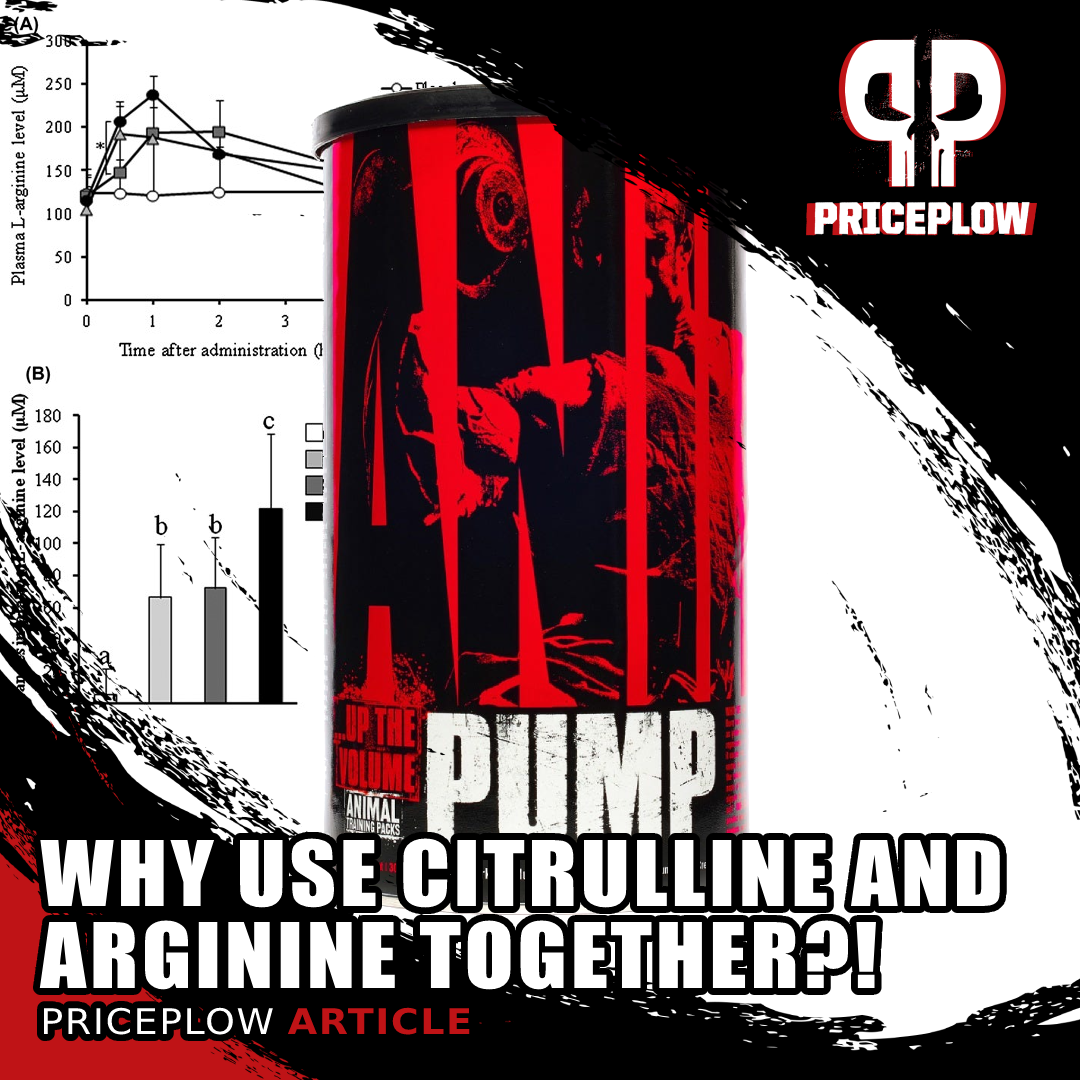
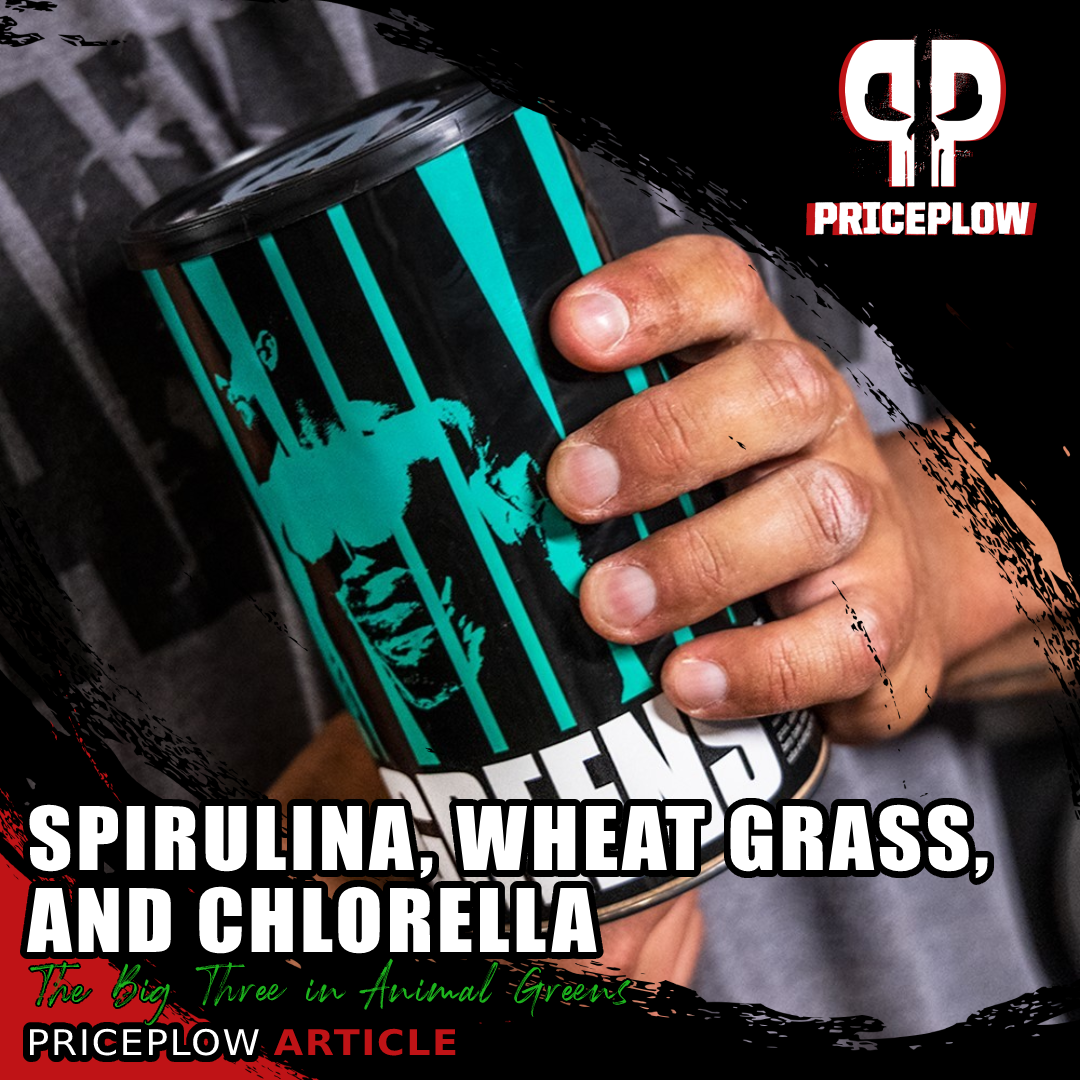
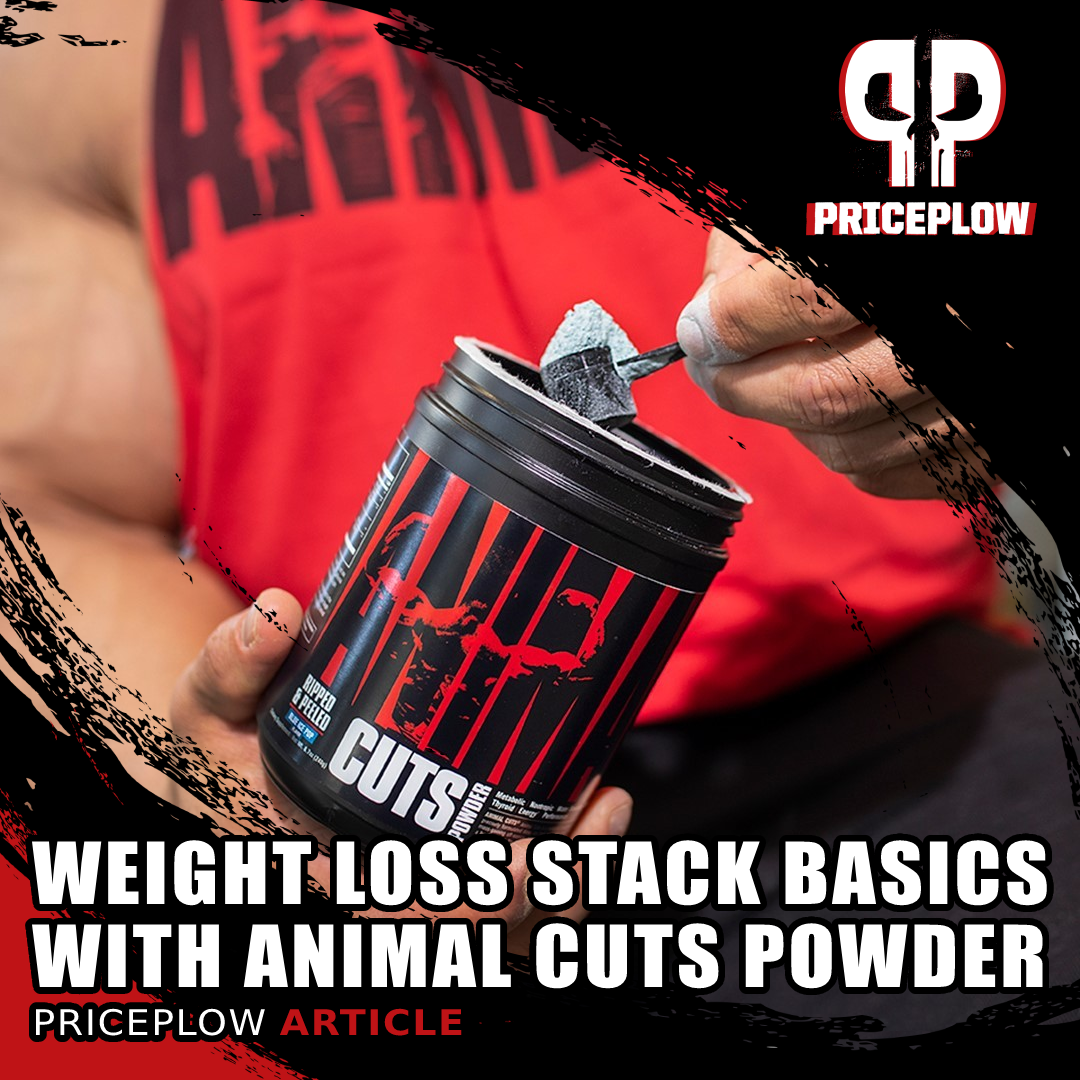
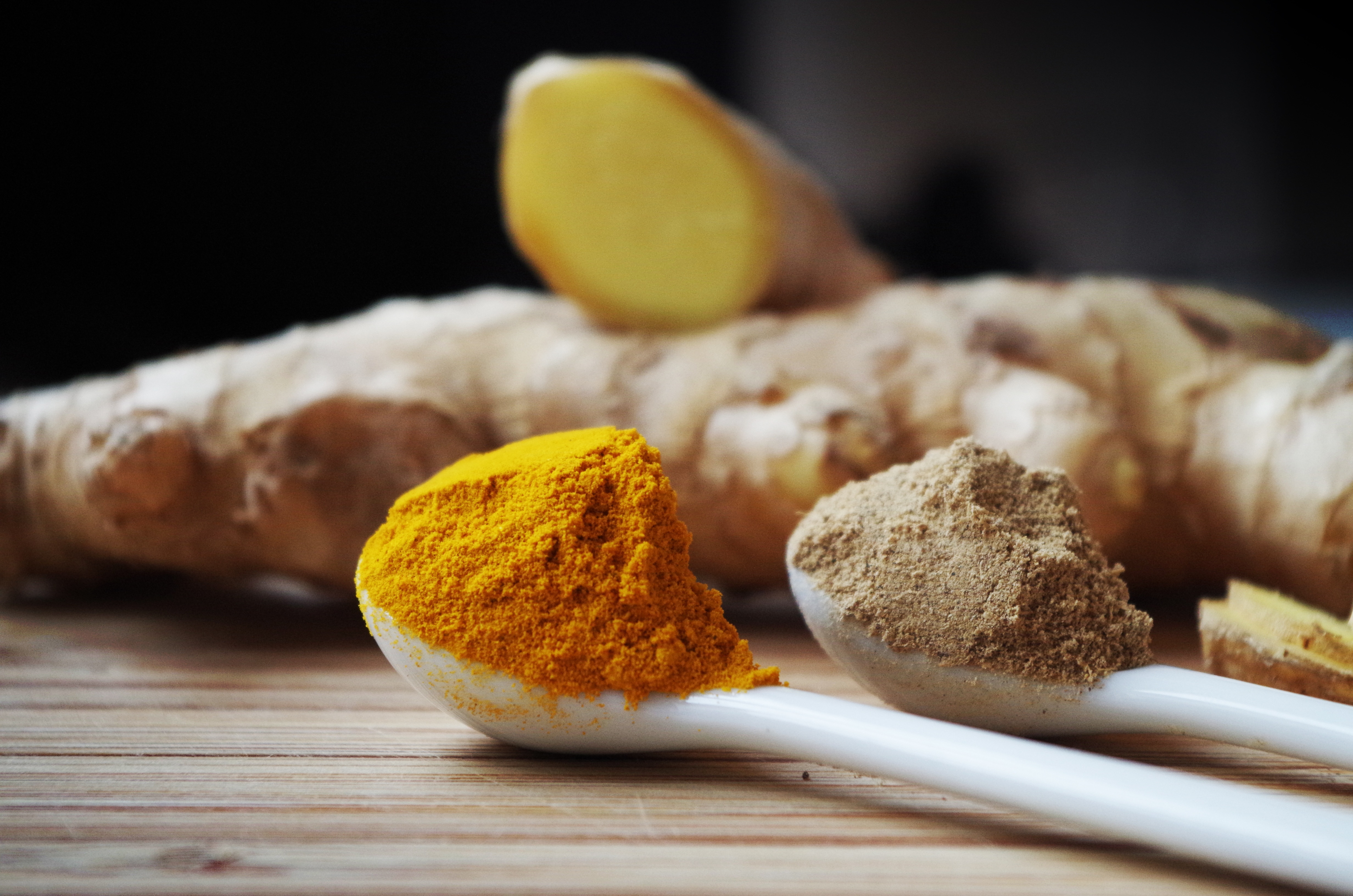
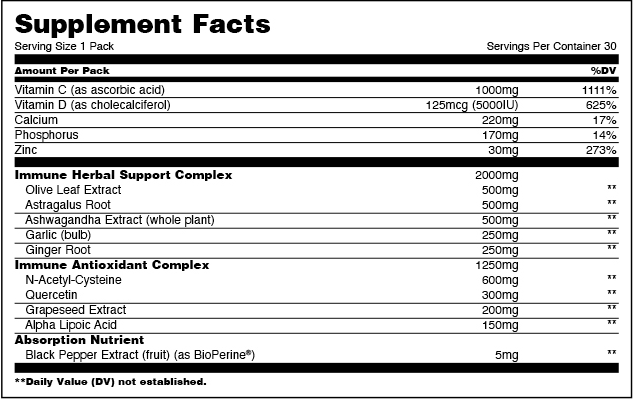
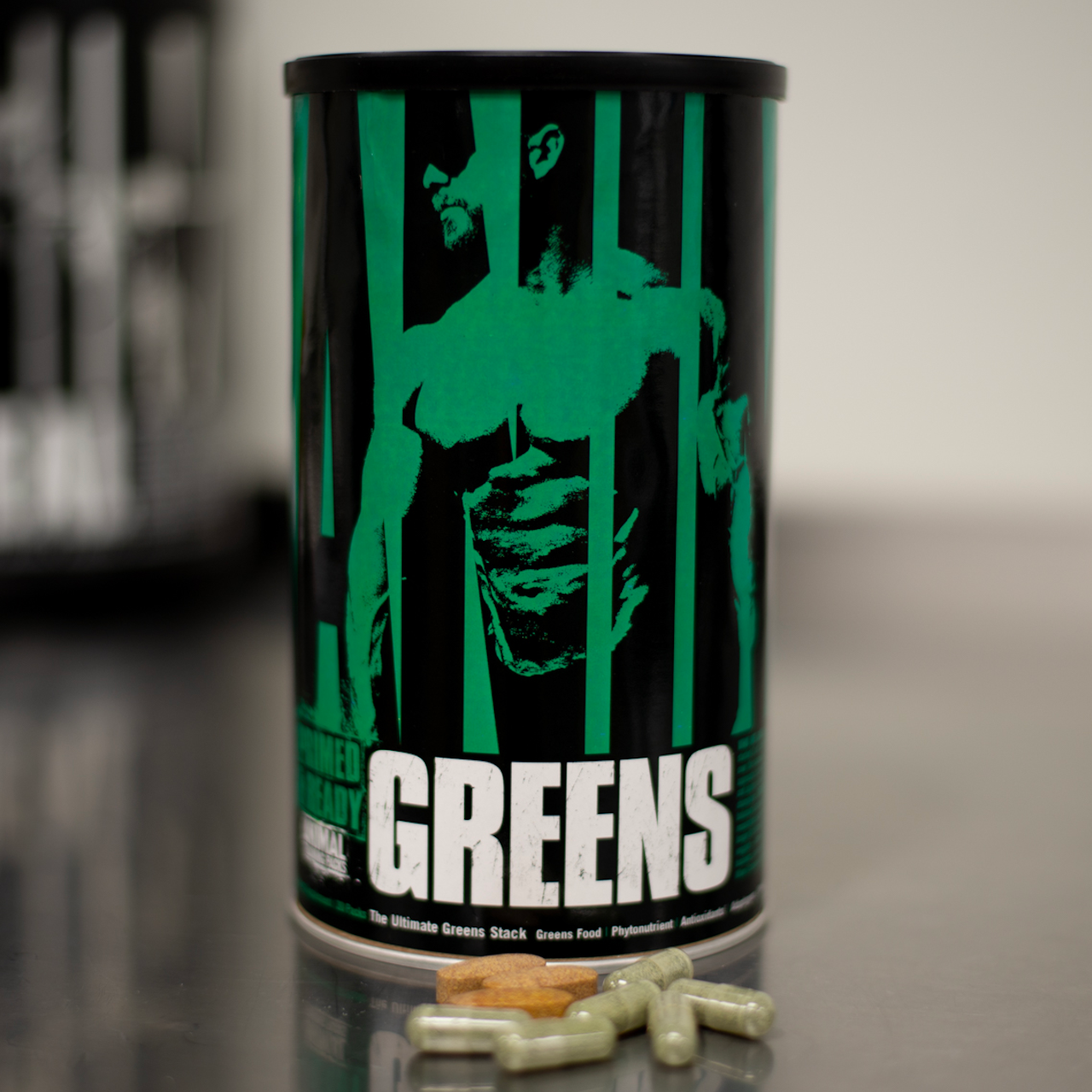


Comments and Discussion (Powered by the PricePlow Forum)